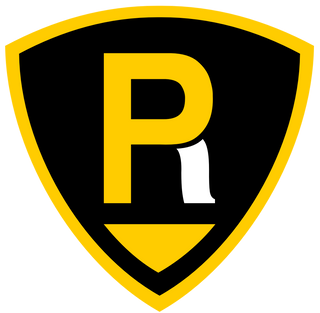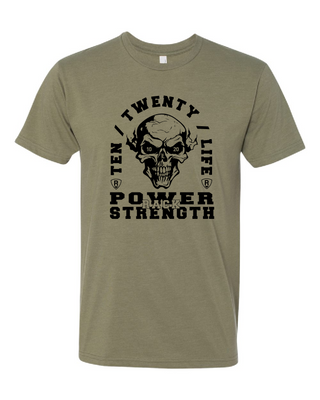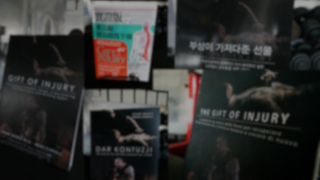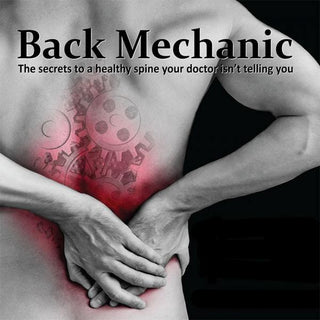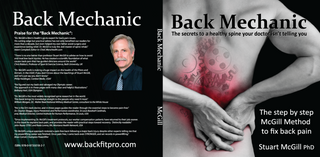Back Mechanic by Dr. Stuart McGill
- Unit price
- / per
For bulk orders (10 books or more) contact customerservice@powerrackstrength.com for bulk order rates!
In an age where a seemingly endless amount of gimmicky back products are in circulation, a definitive guide to self-assessment and rehabilitation is more essential than ever.
“Back Mechanic” (Soft back, September 2015) is geared for the lay public and anybody with back pain. Dr. McGill guides the reader through a step-by-step process to identify their particular pain triggers, then based upon this assessment, guides the person on what they should stop doing and what they should do.
Back Mechanic guides you through a self-assessment of your pain triggers, then shows you how to avoid these roadblocks to recovery. Then effective exercises are coached in a step by step progressive plan. Spine expert, Prof. McGill used his 30 years of research findings and clinical investigations to create this evidence-based guide that has helped thousands reclaim their lives. This knowledge is now available to you in this richly illustrated book. You will become your own best Back Mechanic and advocate.
Back Mechanic Table of Contents
Introduction and overview
The way to a pain-free and robust back
Section 1: "Why me?" Understanding your pain
- 1. Myth-busting
- 2. Back to basics: Getting to know your back and causes of pain
- 3. Is surgery for you?: The essential list
- 4. The Code: Rules and guidelines for back health
Section 2: Self assessment: Finding the cause of your back pain
- 5. Use the McGill approach to find your pain trigger
- 6. Your self-assessment
Section 3: The repair job: Using the right tools to make activity pain-free
- 7. Removing the cause of pain: Learning basic movement tools
- 8. Spine hygiene: moving without pain
- 9. Building a resilient back: The non-negotiable "Big 3" exercises
- 10. The walking program: Nature's back balm
- 11. The core program
- 12. Restoring the hips
Section 4: Tuning the machine for best performance
- 13. Next level training: Regaining your active lifestyle
- 14. Special exercises for sciatica, kyphosis, scoliosis, stenosis, the overweight and others
- 15. Solutions that solve back pain: Case studies and sample programs
- 16. Q and A with the Professor: Sex, selecting a mattress, and other things you were afraid to ask
- 17. Conclusion
Appendix: Exercise Logs
- 18. Pain and activity ability
- 19. Exercise log
Back Mechanic by Dr. Stuart McGill
- Unit price
- / per
Adding product to your cart
You may also like
For bulk orders (10 books or more) contact customerservice@powerrackstrength.com for bulk order rates!
In an age where a seemingly endless amount of gimmicky back products are in circulation, a definitive guide to self-assessment and rehabilitation is more essential than ever.
“Back Mechanic” (Soft back, September 2015) is geared for the lay public and anybody with back pain. Dr. McGill guides the reader through a step-by-step process to identify their particular pain triggers, then based upon this assessment, guides the person on what they should stop doing and what they should do.
Back Mechanic guides you through a self-assessment of your pain triggers, then shows you how to avoid these roadblocks to recovery. Then effective exercises are coached in a step by step progressive plan. Spine expert, Prof. McGill used his 30 years of research findings and clinical investigations to create this evidence-based guide that has helped thousands reclaim their lives. This knowledge is now available to you in this richly illustrated book. You will become your own best Back Mechanic and advocate.
Back Mechanic Table of Contents
Introduction and overview
The way to a pain-free and robust back
Section 1: "Why me?" Understanding your pain
- 1. Myth-busting
- 2. Back to basics: Getting to know your back and causes of pain
- 3. Is surgery for you?: The essential list
- 4. The Code: Rules and guidelines for back health
Section 2: Self assessment: Finding the cause of your back pain
- 5. Use the McGill approach to find your pain trigger
- 6. Your self-assessment
Section 3: The repair job: Using the right tools to make activity pain-free
- 7. Removing the cause of pain: Learning basic movement tools
- 8. Spine hygiene: moving without pain
- 9. Building a resilient back: The non-negotiable "Big 3" exercises
- 10. The walking program: Nature's back balm
- 11. The core program
- 12. Restoring the hips
Section 4: Tuning the machine for best performance
- 13. Next level training: Regaining your active lifestyle
- 14. Special exercises for sciatica, kyphosis, scoliosis, stenosis, the overweight and others
- 15. Solutions that solve back pain: Case studies and sample programs
- 16. Q and A with the Professor: Sex, selecting a mattress, and other things you were afraid to ask
- 17. Conclusion
Appendix: Exercise Logs
- 18. Pain and activity ability
- 19. Exercise log
